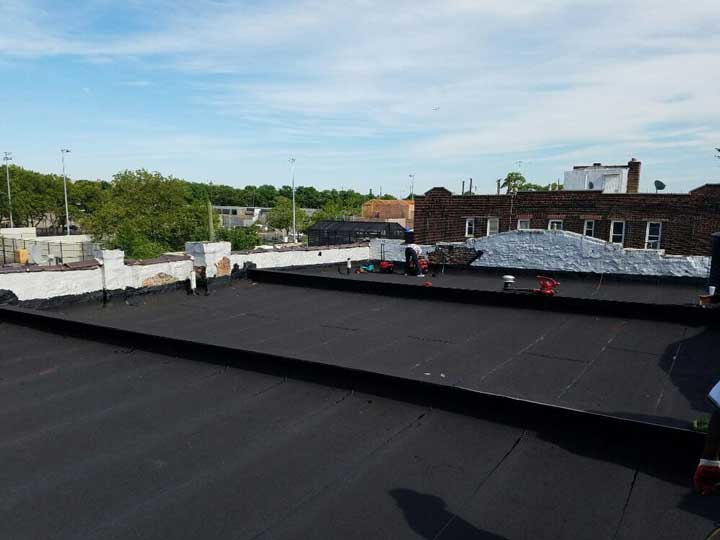EPDM (ethylene propylene diene monomer) is an extreme rubber roofing membrane and has been in use since 1960 in the US. EPDM is highly resilient and perfect for the low slope commercial roofing industry. Its two chief elements ethylene and propylene are derived from oil and natural gas. A flexible rubber matrix is formed when diene is added in the mix of ethylene and propylene. It is available as reinforced and unreinforced and also available in cured (vulcanized) and uncured (non-vulcanized) state.
EPDM is available in black and white with the width ranging from 7.5 feet to 50 feet and a thickness of 45 and 60 mils.
EPDM is specially designed for commercial roofing, so it is a non-residential roofing product. EPDM exteriors are single-ply membranes which means there is only one ply of roofing material and not multiple plies.
Installation of EPDM:
EPDM is a quick built-up system. Professionals install EPDM in three ways;
- Fully adhered: Installed by using water or solvent-based adhesives to adhere the rubber.
- Mechanically attached: installed by a manufacturer approved contractor to the substrate by using fasteners or nails.
- Loose-laid: Secured only at the perimeters and penetrations. A ballast of round river rock or concrete pavers to hold the material in place.
The seams are sealed with liquid adhesive or specialty tape.
EPDM Products:
- Standard Black EPDM Membrane: This single ply product is most economical and best for ballasted and fully adhered systems.
- Standard Reinforced EPDM Membrane: This product is reinforced with polyester fabric and designed for superior fatigue, tear and puncture resistance. This is ideal for mechanically attached systems.
- White-on-Black EPDM Membrane: This product keeps the building cool by reflecting the sun rays. Beneficial for lowering energy cost.
Pros:
EPDM systems offer:
- Average lifespan of 30 years, if properly installed and maintained.
- Relatively inexpensive
- Easy to install
- No odor and fumes
- Resistance to breaking down
- Cyclical membrane fatigue resistance
- Resistance to hail damage
- Eco friendly
- Thermal shock durability
- Effective in most climates
- Resistance to UV radiation
- Ability to recycle when re-roofing
- Adaptive to structural movement
Cons:
EPDM has minor cons often due to poor installation.
- The sealing of the seams require cleanliness and dry conditions.
- If the chemical reaction between materials and adhesives occur, it will result in blistering. Therefore, it should not be installed on asphalt based materials.
Warranty:
Like other roof systems, EPDM varies in lifespan. The warranty of an EPDM roofing system depends on;
- The thickness of the material used
- The method of installation
- Type of building ie. flat or sloped roof
- Environmental factors
The average warranty offered is 10-30 years. Proper installation and maintenance will be the key to the a long lasting EPDM exterior.
Goldenberg Roofing NYC 300 East 39th Street #4D New York NY 10016 (212) 457-1331 bestroofingnyc.com
